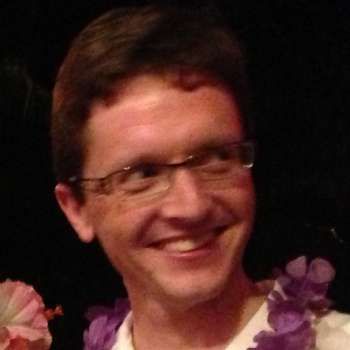Take Gogol’s surreal storyline, cut it with Shostakovich’s grotesque musical palette, and filter the mixture through the antic mind of Barrie Kosky: the outcome was always going to be colourfully anarchic. The production of The Nose which opened in the Sydney Opera House last night lived up to expectations – it was brash, rude, ebullient and frequently laugh-out-loud funny. Trying to find morals, messages or even sense would be a mistake: much better to succumb to the kaleidoscopic visuals of Kosky’s acid-dream, complete with bearded ladies, giant tap-dancing noses and the rest of the trippy pageant of carnivalesque revelry.
This production had its first outing at Covent Garden late in 2016, with two of the main performers returning to their roles here. Martin Winkler delivered a tour-de-force performance as Kovalyov, the bureaucrat who loses the eponymous appendage. Vocally, he was a towering presence, cutting through Shostakovich’s noisier orchestrations without trouble (not everyone was able to do this). Facially and gesturally he embodied the lunatic spirit of the production, now gurning and spasming, now hawking and spitting, displaying a staggering repertoire of tics and jerks to keep the chuckles coming.
The celebrated bass Sir John Tomlinson was introduced as the drunken barber who shaves Kovalyov and later finds the detached proboscis in his bread (did the opening stropping of the razor and musically choreographed shaving owe something to Chaplin’s Great Dictator?). He remains physically very spry in his seventies, participating freely in the rough and tumble, all the while sounding sonorous. Like most of the other singers in an enormous ensemble cast, he took on several other roles during the course of the evening.
Other stand out performers included the ever-amusing Kanen Breen in the freakishly high tenor role of the Distrinct Police Inspector, Sian Pendry and Eva Kong as the scheming mother and daughter trying to entrap Kovalyov into marriage, and Virgilio Marino as the shuffling, shambling valet Ivan. The role of the nose was divided: it was sung by the impressive Alexander Lewis, while inside the enormous nose costume a young boy danced and gestured with aplomb. Kudos aplenty to the chorus (the funeral-dirge was particularly enjoyable) and even more to the dancers in this production. The latter were busy as hookers in basques doing the Charleston, or line-dancing policemen, with the dream-sequence of tap-dancing noses that bridged Acts 2 and 3 a highlight.
Shostakovich’s score is often deliberately rebarbative, especially at the climaxes, but insofar as could be ascertained the orchestra (led by Andrea Molino) were on form, with a tight percussion ensemble and fine solos from concert-master Jun Yi Ma. In comparison to the 1979 Moscow live recording it ran ten minutes longer, almost to the two-hour mark. Towards the end, there was perhaps a feeling of visual surfeit: the absurd, taken to such lengths, tips over into something different, maybe even something sinister (for which the harassment and stripping of Kovalyov served as the visual metaphor). Is the world random and cruel? Or, as Verdi concluded in Falstaff, is it all just a big joke (“Tutto nel mondo è burla”)?
Such questions are for each viewer to decide for themselves. Plants in the audience anticipated scandalized bourgeois reactions, commenting loudly: “Well, you wouldn’t see this at the Rooty Hill RSL/ in Evita”. Forget a suburban theatre: The Nose was wildly out of sync with the general conservatism of Opera Australia’s offerings over the past decade (of those I’ve seen, only The Love of Three Oranges comes anywhere close to this zany riot). Such Regie-style productions are standard in Berlin, where Kosky runs the Komische Oper. Antoinette Halloran, who interrupted proceedings near the end to offer more meta-commentary in the guise of a TV presenter, noted that many of the audience were no doubt wondering “why anyone would want to perform this story as an opera”, adding drily that many of the performers had had the same thought. True or not, everyone seemed to be having a whale of a time in their prosthetic noses and prismatic costumes, and the same was true of the audience.
In another moment of fourth-wall breaking, another indignant patron complained “I thought I was coming to see La traviata”. With Szymanowski’s King Roger mounted last year, and rumours of a Wozzeck down the line, maybe there’s a welcome fresh wind blowing through the company. While mainstage opera here will probably remain umbilically tethered to the Italian nineteenth-century tradition and similar core repertory for the foreseeable future, every now and then it’s good to have one’s expectations overturned by something that really gets up one’s nose. Come along and catch the coke-fuelled dream-show for an experience unlike any other.




